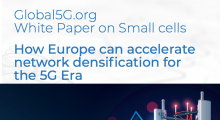5G-EVE: Smart City: Safety and Environment
Overview
According to the World Health Organisation (WHO): “Air pollution poses a major threat to health and climate”. The combined effects of ambient (outdoor) and household (indoor) air pollution cause about 7 million premature deaths every year. More than 80% of people living in urban areas that monitor air pollution are exposed to air quality levels that exceed the WHO guideline levels. Considering the above, the “Smart City: Safety and Environment” use case addresses ambient air quality monitoring and forecasting in outdoor environments. Air quality monitoring is achieved through WINGS’ low-cost multi-sensor station that measures: O3, CO, SO2, NO, NO2, PM1, PM2.5, PM10, noise, temperature and humidity. Using an integrated 5G modem, the station connects to the 5G network that is deployed in the Greek site and transmits real-time measurements to the WINGS’ STARLIT cloud platform.
Architecture
The trial is totally controlled through the 5G EVE’s framework and more specifically, through the modules / mechanisms that are deployed in three layers (portal, interworking layer, Greek site).
Deployments
The trial took place at OTE Academy premises, Athens, July 2020. The air quality station was installed there as part of the Smart City infrastructure. A 5G Gateway was deployed close to the sensors and was responsible to collect data from them and to communicate with the 5G RAN and therefore, acting as a 5G terminal. The purpose of the 5G Gateway was to provide the required connectivity. The WINGS STARLIT platform, in which the Monitoring Services were deployed, was also available on site and hosted by a cloud server.
Results
The trial was supported by visualization dashboards that are included in the STARLIT platform. A few selected KPIs were closely monitored during the trial. In particular, there were vertical KPIs such as the “Request response time” and the “Number of sensors supported”, as well as network KPIs such as the “RTT latency” and the “Total throughput”. Through the KPI validation tool, latencies in the area of 10ms were actually achieved.
5G Empowerment
In this trial, measurements from the station were sent to the STARLIT platform, over an mMTC slice, and then the platform processed these measurements, generated forecasts on the status of various parameters and triggered actions related to air quality monitoring and health recommendations. The key point for the success of the trial was the accurate, reliable and extremely fast transmission of the data through the 5G network. This allowed for immediate reactions in cases of air quality degradation. 5G will also further fuel IoT applications, through the mMTC services and the ability to interwork with URLLC and, where relevant, with eMBB. This will bring further applications that will change the way we work and live.




